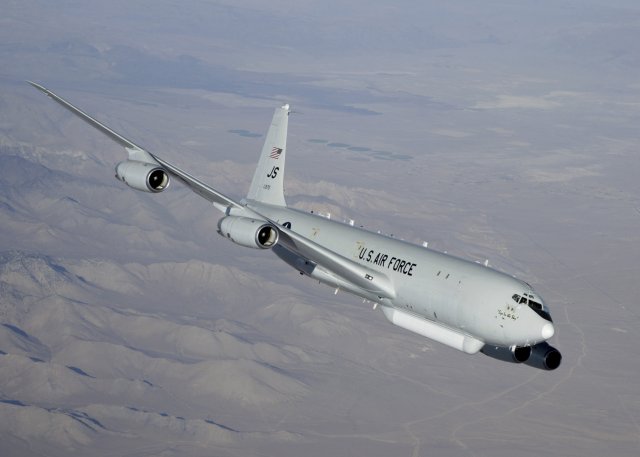Breaking news
USAF E-8C Joint STARS fleet reaches 1 millionth flight hour.
| a | |||
|
|
|||
|
World Aviation Defense & Security News - United States
|
|||
|
|
|||
|
USAF E-8C Joint STARS fleet reaches 1 millionth flight hour
|
|||
|
The USAF 7th Expeditionary Airborne Command and Control Squadron flew the E-8C Joint Surveillance Target Attack Radar System (Joint STARS) worldwide fleet to its 1 millionth flight hour Sept. 6, following a combat mission in support of operations throughout the U.S. Air Forces Central Command area of responsibility.
|
|||
|
|
|||
 An US Air Force E-8C Joint Surveillance Target Attack Radar System An US Air Force E-8C Joint Surveillance Target Attack Radar System(Courtesy photo) |
|||
|
|
|||
|
The Joint STARS here have completed approximately 3,000 combat hours in 2016 in support of coalition operations throughout the region. “Simply put, (Joint STARS) finds things and solves operational problems in the air and on the ground,” said Lt. Col. William Hartman, the 7th EACCS commander. “(Joint STARS) battle managers use our ground surveillance radar to detect, disrupt and ultimately destroy (enemy) forces in Iraq and Syria in partnership with our air coalition strike assets every day, while also providing support and over-watch of friendly forces in Afghanistan.” Driving those capabilities is the unique radar system onboard the aircraft that is able to find, track and classify ground movements in all conditions deep behind enemy lines. The detailed intelligence, surveillance and reconnaissance information provided by the JSTARS to theater ground and air commanders directly contributed to more than 15,000 air strikes conducted during Operation Inherent Resolve, ultimately shaping and clearing enemy operations across the region. The platform also boasts a robust communication suite, which allows it to execute airborne command and control to boost force protection, defensive operations, over-watch and combat search and rescue missions. The Air Force’s 16 Joint STARS has, in its combined lifetime, flown in excess of 1 million flight hours. If flown continuously, that would be equal to more than 114 years of nonstop flying. To achieve such a legacy milestone, the fleet relies on its Airmen’s ingenuity to make the impossible, possible. The JSTARS maintenance crews navigate a variety of issues daily in the desert environment to ensure the 1960s-era aircraft are available to meet theater requirements. “Despite a limited amount of people and available aircraft, we take pride in ensuring that ground forces receive (Joint STARS) support overhead each and every day,” said Master Sgt. Jeremy Shores, a 7th EACCS production superintendent. To make this happen, our maintainers work long hours in a hot and dusty environment with heat indexes well above 130 degrees Fahrenheit. Day in and day out they excel in making sure items are fixed right the first time.” Maintaining an aircraft that is older than the Airmen who work on it can be a challenge. The Joint STARS fleet is comprised of Boeing 707 airliners and already had between 20,000 and 60,000 flight hours prior to being converted to Joint STARS. Repurposed, the average aircraft in the fleet has logged more than 60,000 flight hours. “Due to the age of our aircraft and its uniqueness, there is a severe shortage of spare parts. We overcome this through the vast experience our total force integration team brings to the table,” Shores said. The TFI team is currently comprised of active-duty personnel, Georgia Air National Guardsmen and a small component of reservists. “Success comes with a price, and that price is wear and tear on our tired fleet,” said Lt. Col. Kevin Davis, the 7th EACCS director of operations. “We could not do this without the experience and tenacity of our TFI maintenance team.” |
|||
,



















